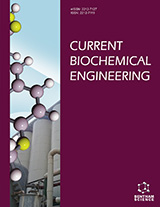Abstract
Background: Rubber vulcanization is a consolidated chemical process to enhance the mechanical properties of the polymeric material by sulfur crosslinking of the polymer chains, such as rubber. Vulcanization Activators are important rubber processing additives that activate sulfur cure and improve the efficiency of sulfur-based cure systems. The most common activator is zinc fatty acid ester that is often formed in-situ by the reaction of fatty acid with zinc oxide. Although zinc is one of the less harmful heavy metals, according to European Council Directive 2004/73/EC, the reduction of zinc level in the environment has become an important task because of its toxic effect on aquatic organisms.
The current study reviews the research achievements in the field of reducing the consumption of micronutrients of ZnO particles based on the use of nanoparticles instead of them in the polymer industry. Among the proposed methods, due to the less environmental effects of magnesium oxide, the use of MgO nanoparticles instead of zinc oxide has also achieved good results.
Objective: The aim of this paper is considering suggested different methods on the reduction of using ZnO particles in related industries, the use of ZnO nanoparticles has had better results than its particles. In addition, due to the less environmental effects of magnesium oxide, magnesium oxide nanoparticles can be used instead of micronutrients of zinc oxide. Overall, the results of various investigations show that reducing the diameter of the zinc oxide particles reduces the amount required for curing the rubber and thus reduces its toxic effects. Also, the use of magnesium oxide nanoparticles instead of zinc oxide in different concentrations is investigated.
Keywords: Rubber, vulcanization, activator, nanoparticle, zinc oxide, magnesium oxide.
[http://dx.doi.org/10.5254/1.3547881]
[http://dx.doi.org/10.5254/1.3542447]
[http://dx.doi.org/10.1002/app.30770]
[http://dx.doi.org/10.1002/app.26296]
[http://dx.doi.org/10.1016/j.rinp.2016.11.022]
[http://dx.doi.org/10.1016/j.tca.2011.10.015]
[http://dx.doi.org/10.1039/c0jm03784b]
[http://dx.doi.org/10.1016/j.eurpolymj.2017.05.029]
[http://dx.doi.org/10.1016/j.polymdegradstab.2018.01.004]
[http://dx.doi.org/10.1088/1757-899X/284/1/012017]
[http://dx.doi.org/10.5254/1.3542446]
[http://dx.doi.org/10.5254/1.3547827]
[http://dx.doi.org/10.1002/app.32736]
[http://dx.doi.org/10.1007/s10971-014-3293-9]
[http://dx.doi.org/10.1002/app.42705]
[http://dx.doi.org/10.5254/1.3547834]
[http://dx.doi.org/10.5254/1.3672428]
[http://dx.doi.org/10.5254/1.3672429]
 16
16

















